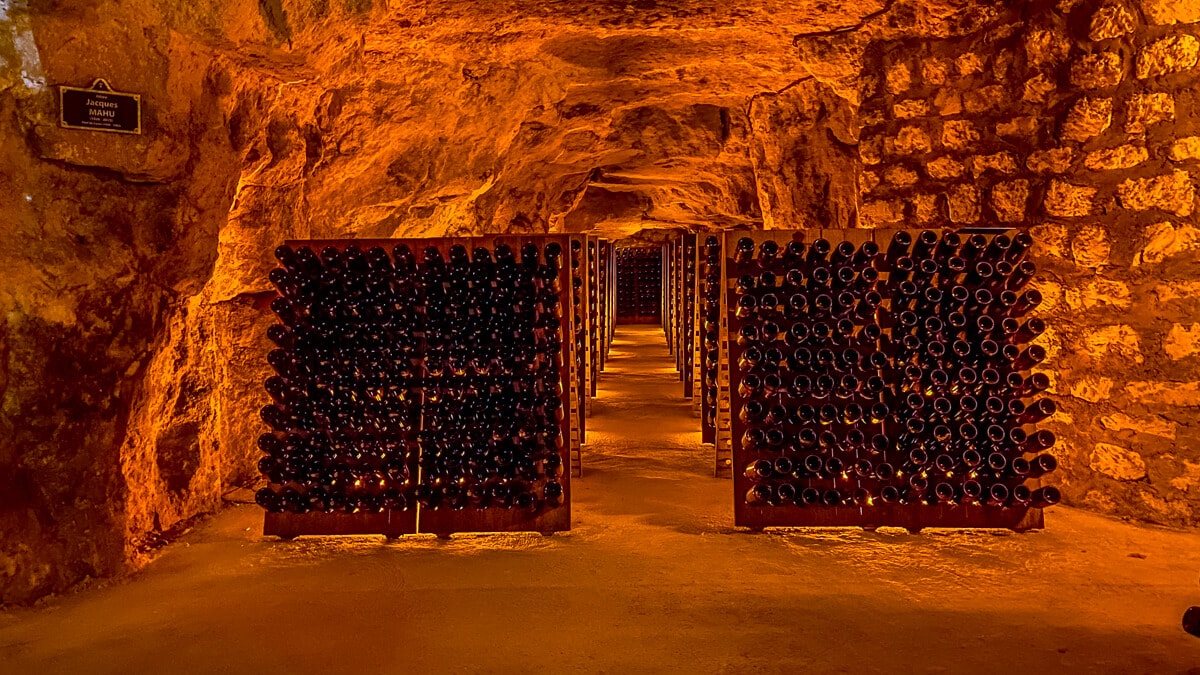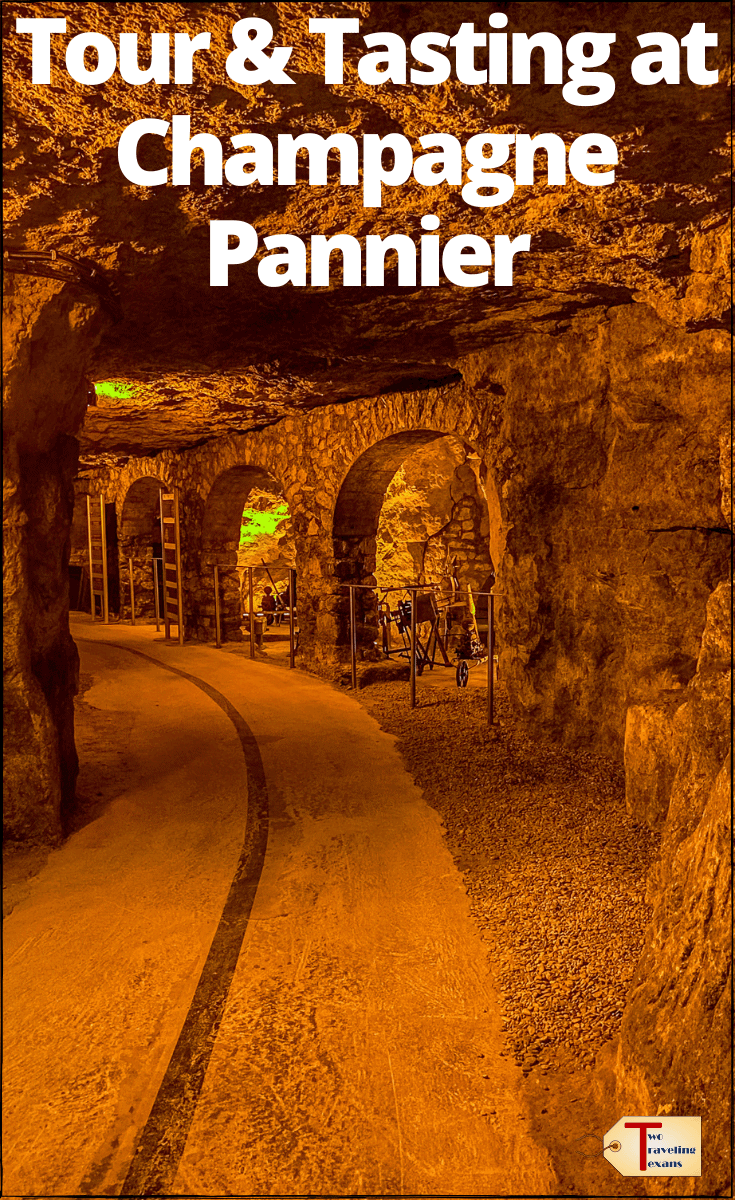Champagne is one of my favorite alcoholic beverages, but I have to admit I know very little about it. Since Aisne produces 10% of the champagne in France, I thought it would be a good place to learn more.
I was excited to do a tour and tasting at Champagne Pannier in Château-Thierry in Aisne. Let me share more about our experience and what we learned.
Note: Our trip to Aisne was sponsored by Aisne Tourism. All opinions are mine. This post also contains affiliate links, please see disclosure for more information.
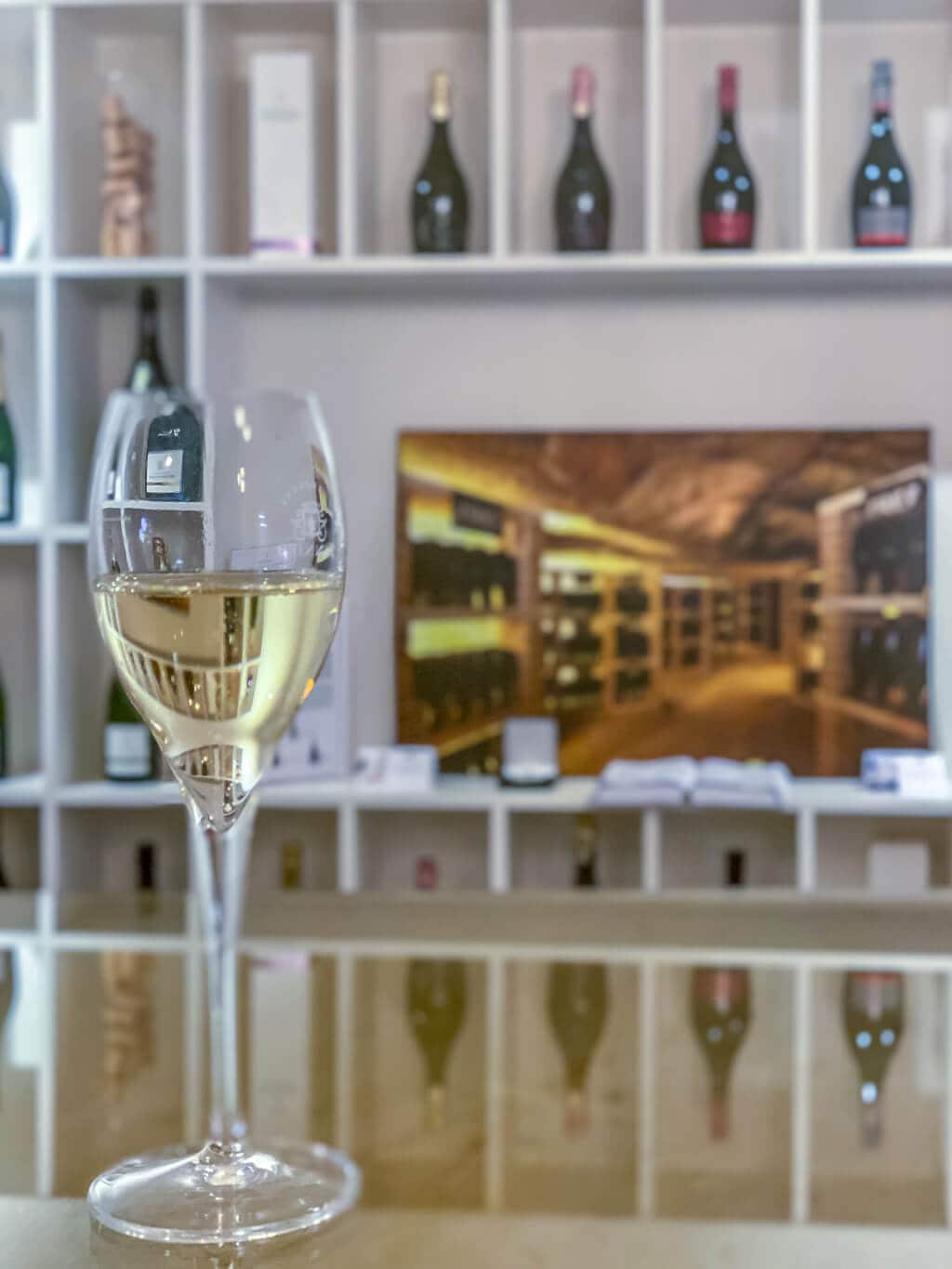
Contents
Where do they make champagne?
For a sparkling wine to be called Champagne, it must be made in the Champagne region, but where exactly is this?
While the region is located in northeastern France, about 100 miles from Paris, it shouldn’t be confused with the historic province of Champagne. The Institut National des Appelations d’Origine has redefined the areas that can produce champagne several times including in 1927 and more recently in 2008.
It’s not something that can be easily identified on a map. While there is only one AOC (Appellation d’origine Contrôlée) in the Champagne region, the area is divided into wine-producing districts, each with their own distinct characteristics. The main ones are Reims, Côte des Blancs, Côtes des Bar, Côtes de Sezzane, and the Marne Valley where you find Champagne Pannier.
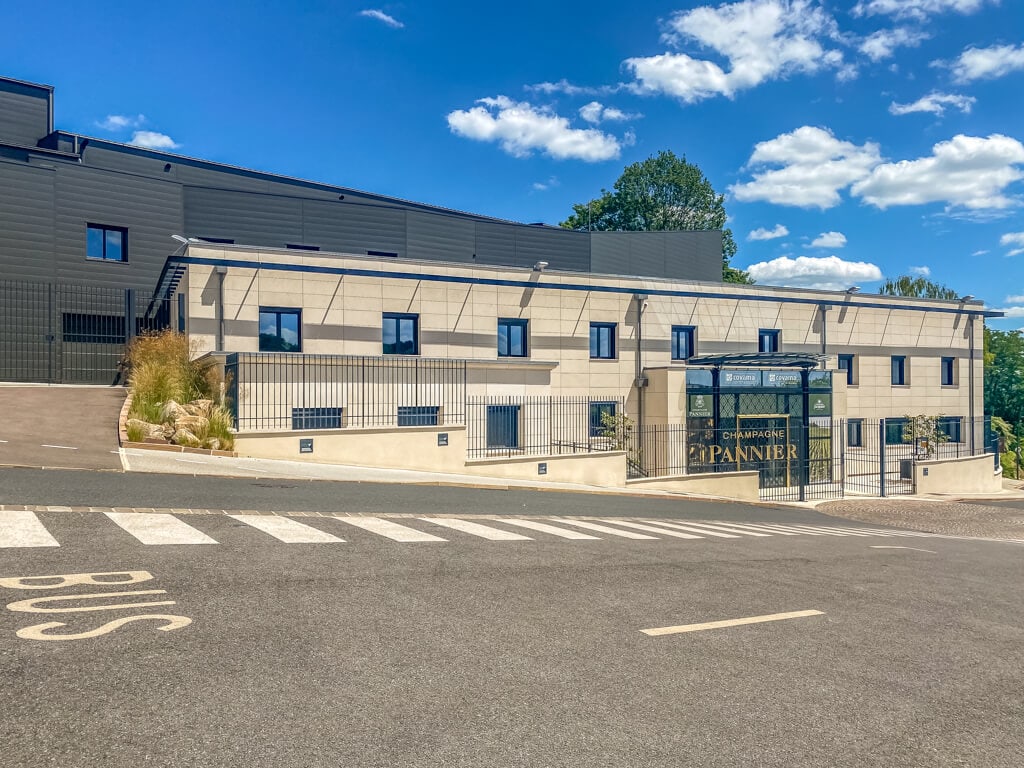
About Champagne Pannier
Champagne Pannier was founded by Louis-Eugène Pannier in 1899, in Dizy, just outside Epernay. In 1937, he bought a 12th century quarry in Château-Thierry and moved the company there. The quarry was turned into cellars to age his wines.
In 1974, a group of growers, now called Covama, joined forces and purchased the house of Pannier. They also own the brands Jacquart and Montaudon.
The symbol of Champagne Pannier became an archer after a group of archaeologists found a medieval stone carving of one in the cellars in 2002. It’s fitting as an archer has some of the same values as Champagne Pannier wine – balance, precision, integrity.
Pannier’s champagnes are distributed all over France, but more than half of what is produced is exported to over twenty countries including the USA and UK. It is the largest champagne house in the western Marne Valley.
You may have been served Pannier if you traveled first class on Virgin Atlantic, Eurostar, and United Airlines. It is sometimes sold in duty-free shops, although we didn’t see any on the ferry back to England.
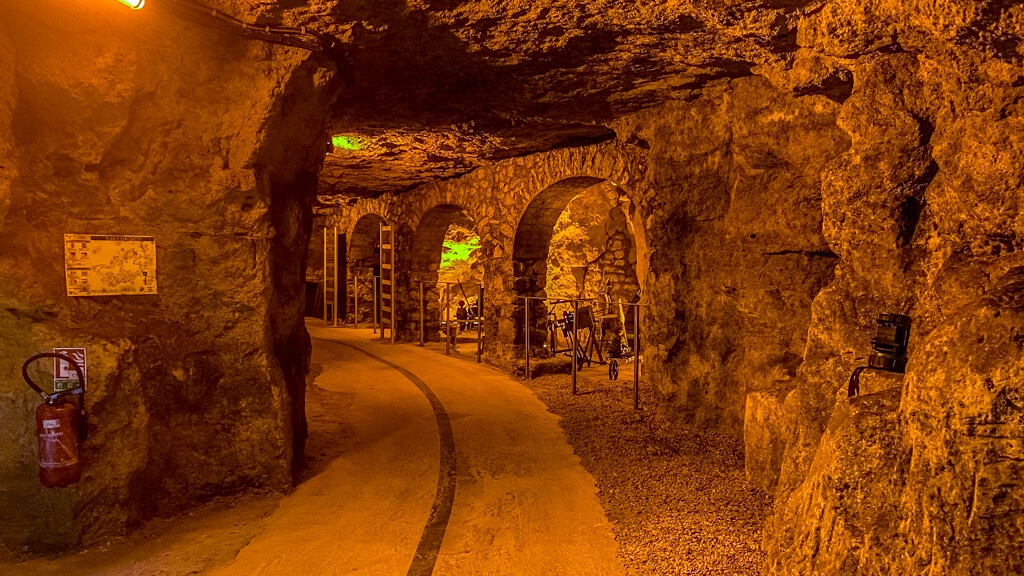
Overview of Champagne Pannier Tour
During the tour of Champagne Pannier, you will go inside the medieval cellars which are like a labyrinth of tunnels more than 1.5 miles long and almost 100 feet deep. You don’t realize how deep the cellars are because the entrance is cut into the side of a hill and there are no stairs or downward walk.
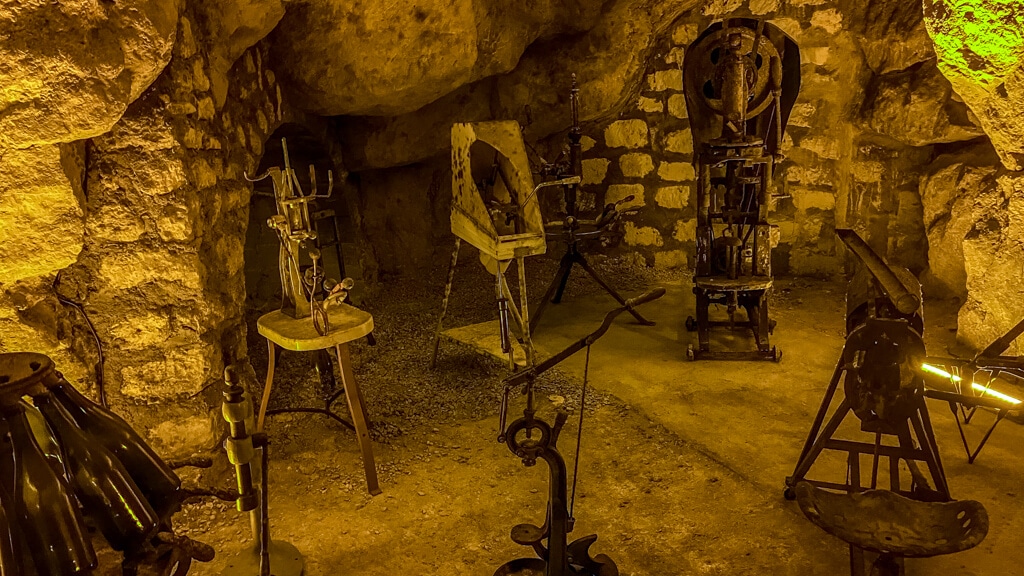
It’s an educational experience where you will learn about the history of champagne and the wine made here. Our guide was very knowledgeable and explained everything starting with the basics. She was also always willing to answer questions.
Walking through the old quarry, we saw some of the equipment that was used to make the champagne over the years along with many bottles of champagne. Our guide also pointed out the medieval carving of the archer that was incorporated into Champagne Pannier’s logo along with another carving that looked to be a woman dating from around the same time.
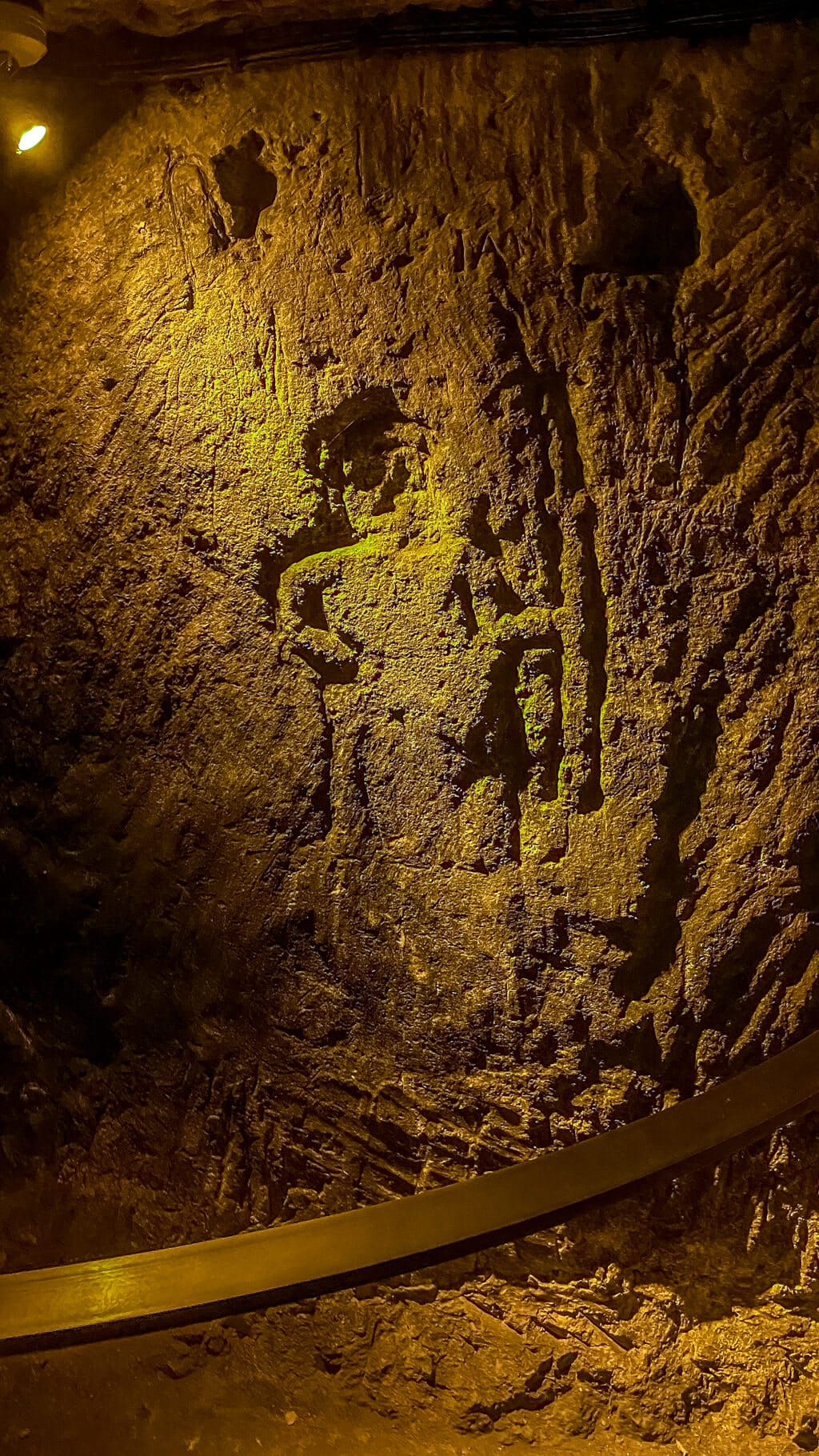
We also saw their champagne library. It has at least one bottle from every year they have produced champagne. Some years they have plenty, other years only a few bottles and they are very precious. It’s precious, unique, and irreplaceable resource that shows the history of the champagne house. Access to this area is restricted.
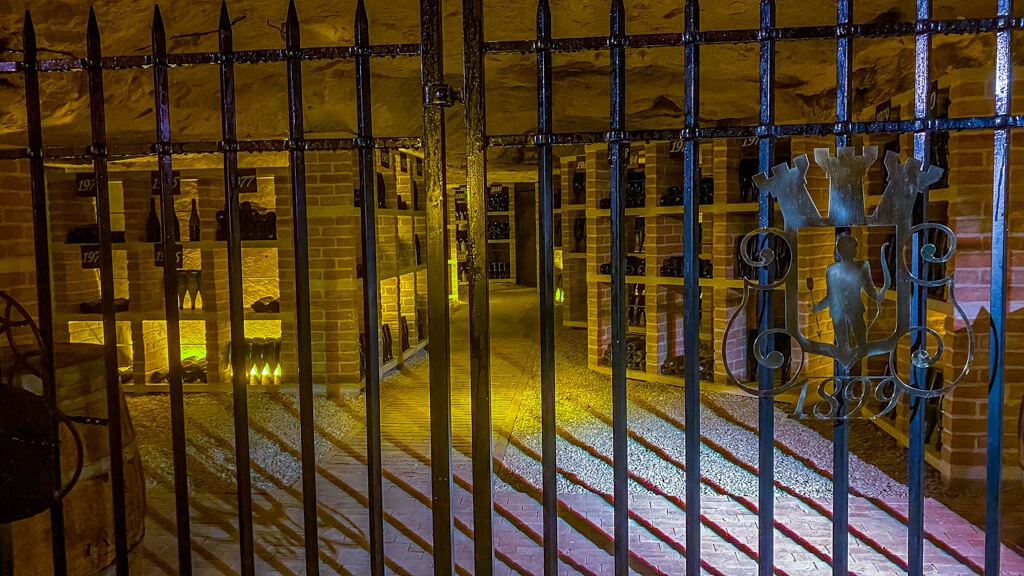
The tour included two short but informative videos. One was about the history of champagne and the other was about the process of making champagne. These videos reinforced what our guide had explained to us.
After the last video, we headed out of the cellars to the tasting room so we could try the champagne. You should allow around an hour for the tour and tasting.
Book you tour and tasting at Champagne Pannier here.
What We Learned on Our Champagne Tour
Before we went into the cellars, our guide asked us how much we knew about champagne. When I told her we knew very little, there was no judgment.
She led us into the cellars and we immediately noticed the temperature drop. It stays between 48°F and 54°F all year which is ideal for storing wine.
The cellars are also dimly lit. We were able to see fine, but it needs to be a bit dark to age the wine.
The last factor that is important for storing wine is the humidity. The cellars are about 80-90% humidity, but since it is chilly, it’s not as noticeable as if it were warmer.
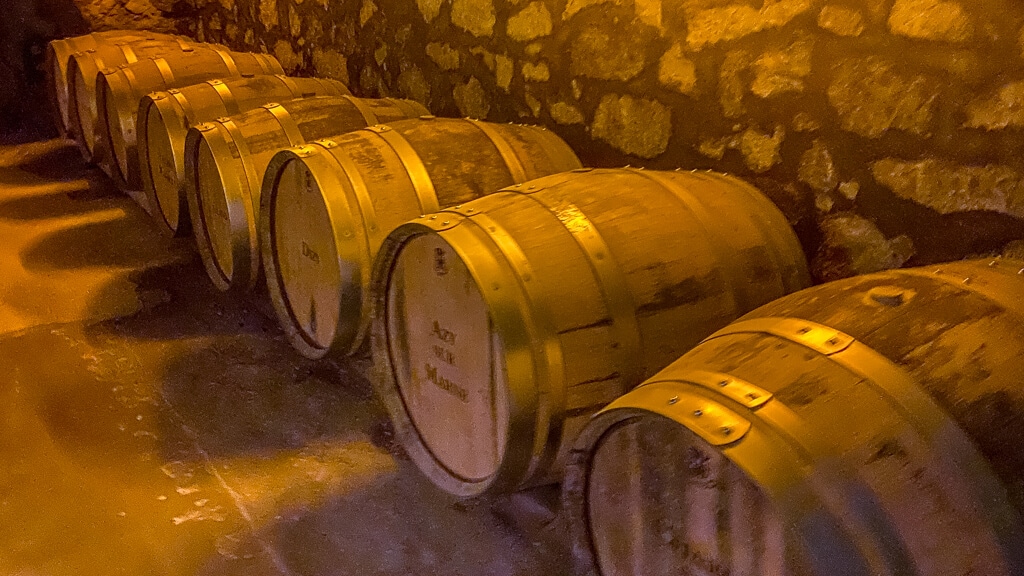
Making Champagne at Pannier
She told us about the grapes used to make champagne. I was familiar with Chardonnay and Pinot Noir, but I hadn’t heard about Pinot Meunier. It’s surprising to learn that two of the three grapes are red. In the 17th century, there was a gentle pressing method introduced that made light juice from the red grapes.

We learned that the grapes are first mixed to create a still wine. Then it is bottled and sugar and yeast are added to start the process of making it sparkling. Over time the yeast eats the sugar and then the yeast dies.
This sediment is removed but it has to be done carefully. First the bottles are inverted and turned gently over a period of several days to get the yeast sediment into the bottleneck. It can take up to a week if done by hand.
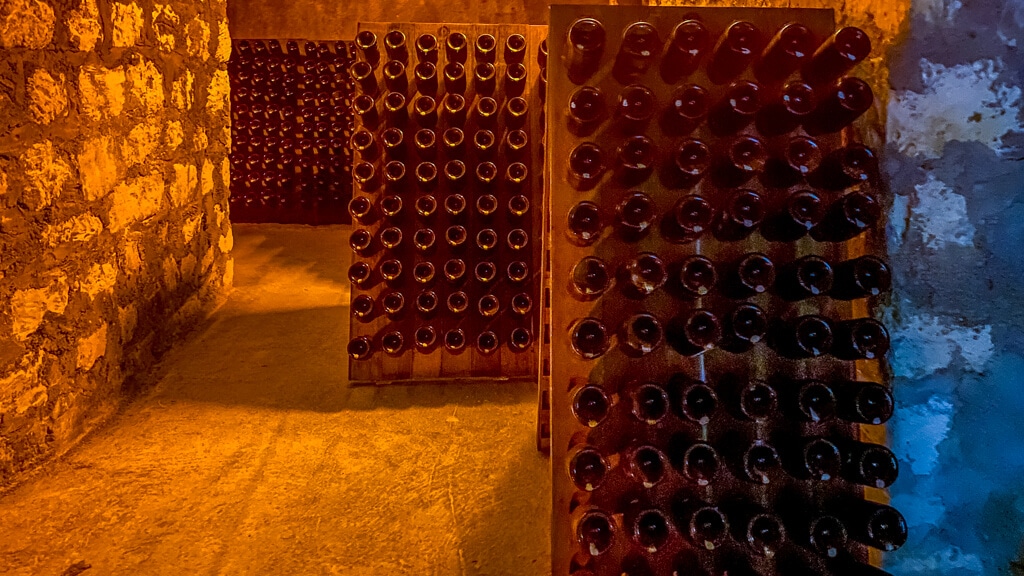
While the bottle is upside down and the sediment is isolated, the neck is frozen in a salt bath. When the bottle cap is removed, the pressure of the carbon dioxide gas in the bottle forces the frozen wine with the sediment out.
To top off the bottle a secret mixture of sugar and wine is added. At Pannier they tend to age the wine longer (minimum of three years) than others so that they can create a sweeter wine with less sugar. Then the champagne is ready for consumption.
The History of Champagne
During our tour of Champagne Pannier, we also found out about the history of champagne. It goes all the way back to the Romans who first planted vineyards in northeastern France in the 5th century. Then in the middle ages wine making continued to progress in the monasteries.
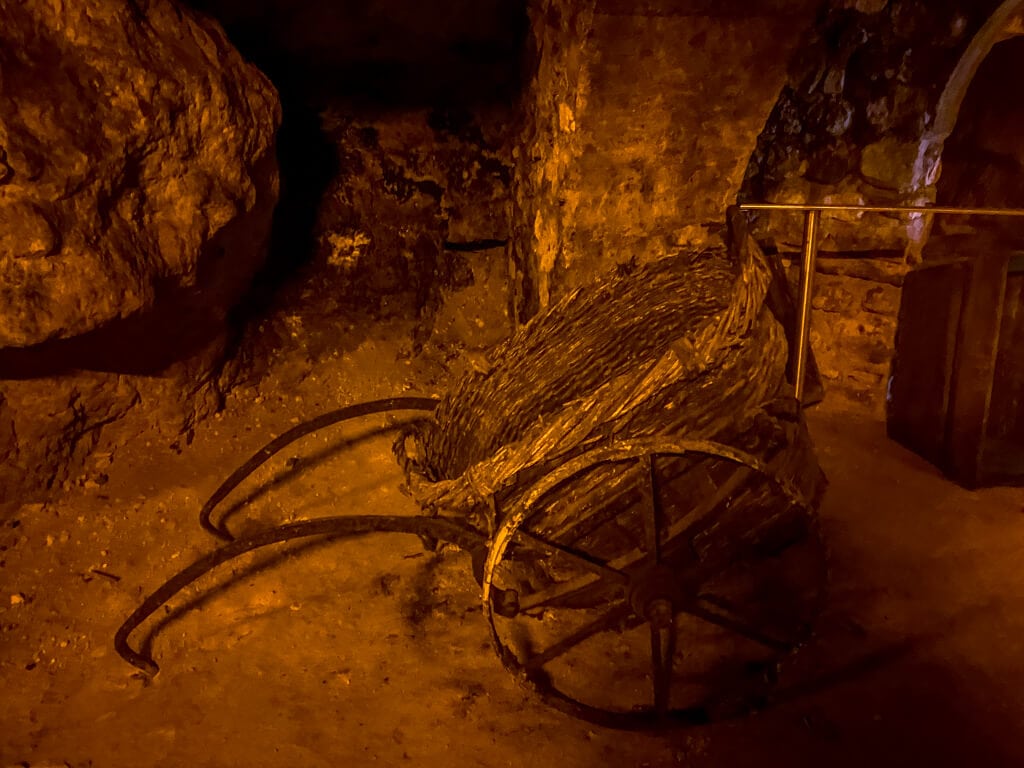
In the 17th century, big strides were made with champagne production. In addition to the new pressing technique to make light juice from red grapes, glass bottles were introduced. Unlike casks, bottles served to preserve the effervescence.
Industrialization in the 19th century helped increase production and make champagne available for more people. Before it had been more of an exclusive drink reserved for the upper class, now more people could have champagne and it seemed appropriate to serve at celebrations. The popularity of champagne began to soar.
Champagne Tasting
Once we finished the tour it was time to do our tasting. At Pannier, you’re given a full glass to appreciate the champagne. That’s not always the case with wine tasting!
The champagne that you taste varies depending on what’s available at the time. During our visit, we got to try the 2014 Blanc de Noirs Brut.

It was crisp and refreshing with hints of apple and citrus. We didn’t have anything to eat with it, but our guide told us that it would go well with a lot of different foods, even some lighter (i.e. chicken or fish) main courses.
While our tour included one tasting, if you want to do more you can. You choose how many tastings you want included when you book your tour. Keep in mind, each tasting is basically a full glass.
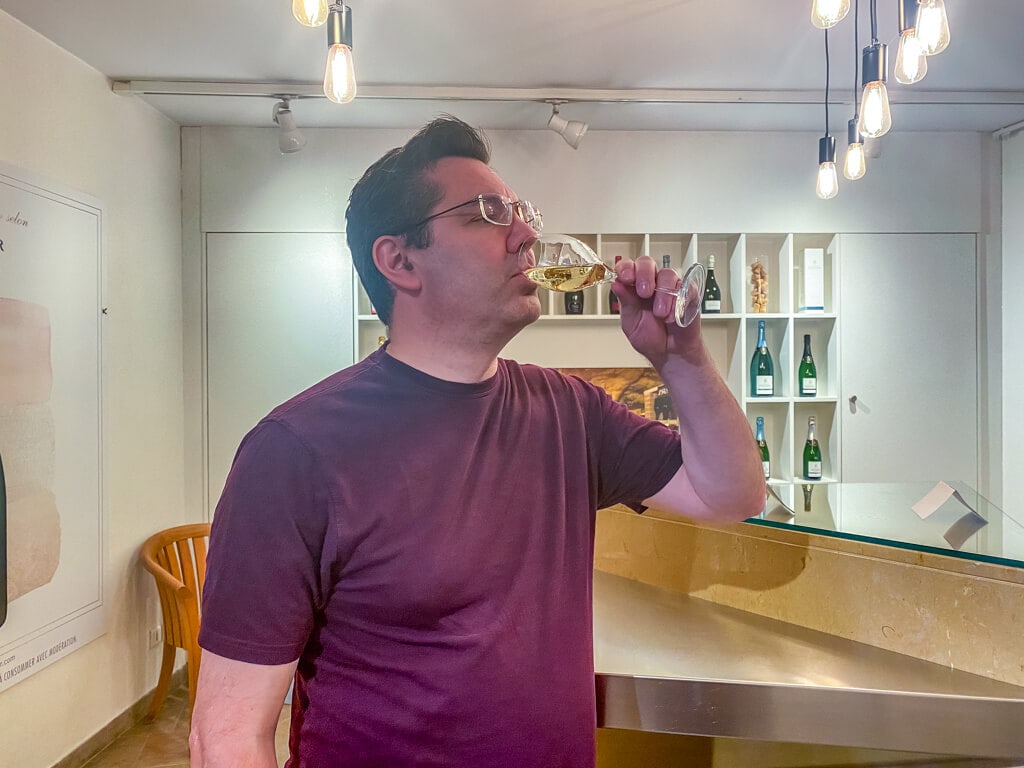
Champagne Shopping
After you finish your tour and tasting, you have the opportunity to buy some champagne. While there is no obligation or pressure for you buy anything, one of the benefits of doing a tour at Champagne Pannier is that you get a discount on any bottles that you buy.
We figure since we enjoyed the champagne so much we should take full advantage. It proved to be too difficult for us to agree on just one bottle, so we bought four.
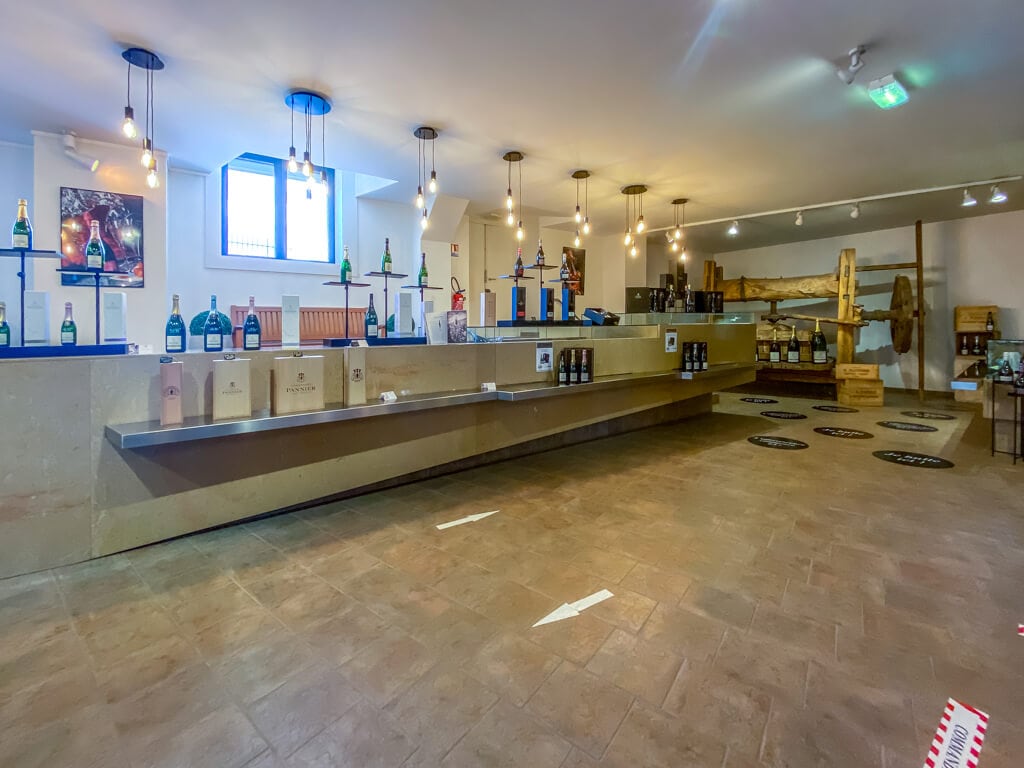
I wanted a rose and was also tempted to buy a bottle of the Blanc de Noirs Brut we had tasted. Russell wanted to get one of their box sets. Since there wasn’t a box set that included both, we decided to get the box set with the Blanc de Noirs Brut and also a bottle of a rose.
Since we had driven to France, we didn’t have to worry about any luggage restrictions imposed by airlines (i.e. Ryanair). The duty free allowance for bringing sparkling wine into England from France is 9 liters or 12 75cl bottles per passenger over 18. We were well below the limit.
You may also be able to purchase Champagne Pannier online. It is offered by wine.com but out of stock at the time of writing.
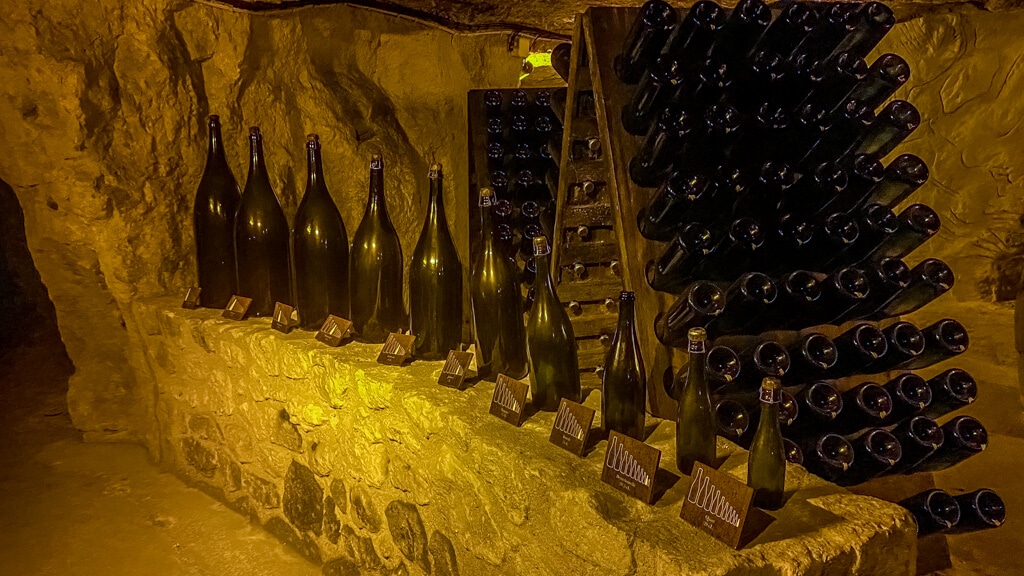
Is a Tour at Champagne Pannier Worth It?
Yes. I think the tour (and tasting) at Champagne Pannier is a good value. We learned a lot during the tour and it felt special to be able to go inside the medieval cellars. The discount is a fun bonus.
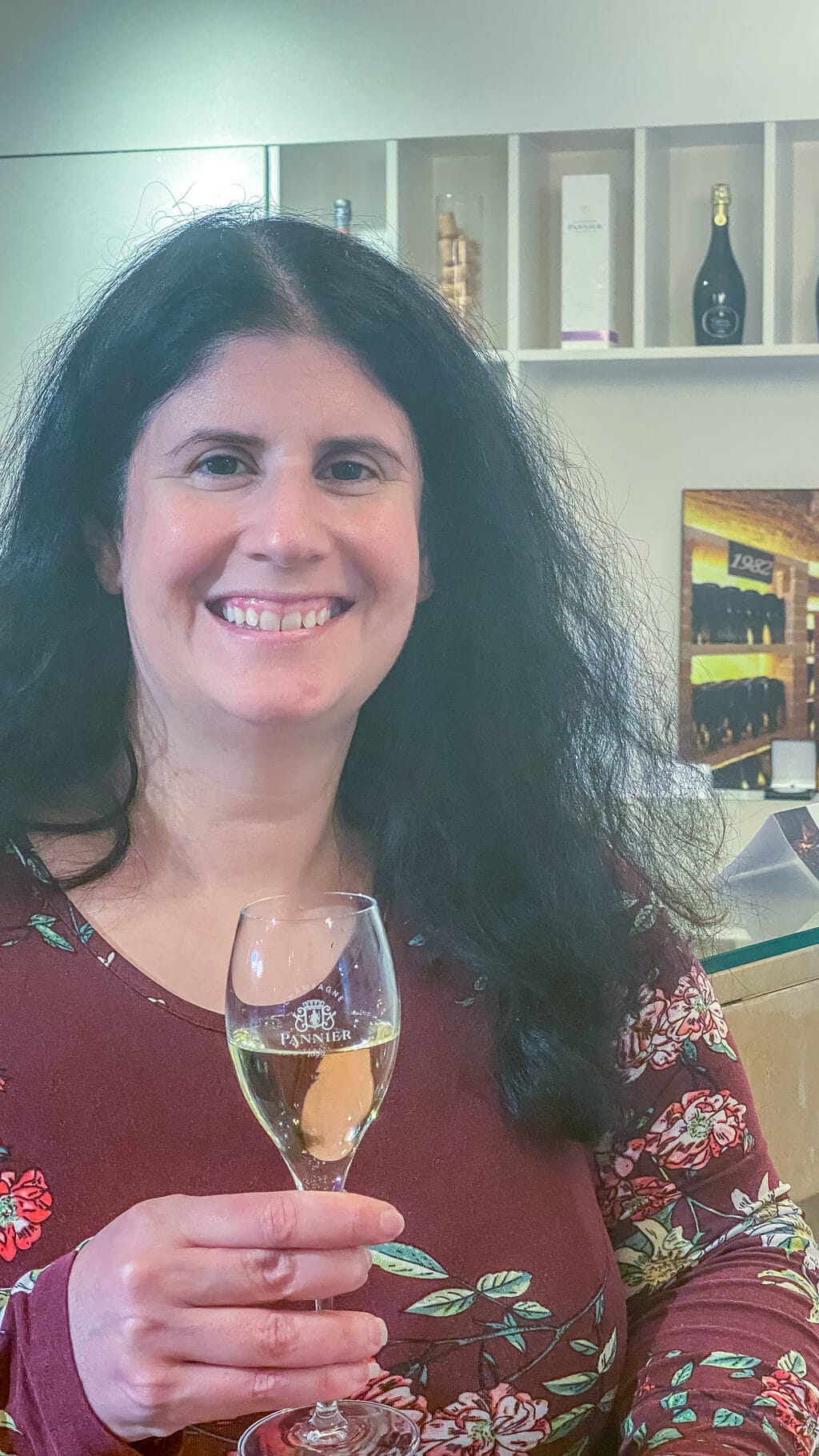
Champagne in Aisne
While we only visited Champagne Painner while we were in Aisne, you can definitely visit more if you like. There are some 500 small winegrowers in the area.
You could travel along the Champagne Tourist Route to see more of the area. Alternatively there is the Champagne et Vous (Champagne & You in English) Festival in Chateau-Theirry typically held annually in October.
If you are looking for accommodations in the area, we recommend that you stay at La Marjolaine. It’s a historic chateau with beautiful gardens close to Chateau-Theirry. Read my detailed review of Chateau de la Marjolaine, or you read more Tripadvisor reviews here and check the price and availability here.
I hope to return and try more of the champagne in Aisne. Have you visited any of the champagne houses?
-Anisa
Pin for Later
Expert Tips for Visiting Champagne Pannier
- You should book your tour in advance here.
- Bring a sweater or jacket as it is a bit chilly in the underground cellars.
- While you are in the area, you should also check out the World War I sites in Aisne.
- If you enjoyed this post, be sure to also read about our experiences tasting wine in other parts of the world including Colmar in the Alsace, Niagara-on-the-Lake, the Algarve in Portugal, and Rioja in Spain.
Disclosure: This post contains affiliate links. As an Amazon Associate I earn from qualifying purchases.
This means we will receive a small commission for some purchases made using links in our blog with no additional cost to you. Please be assured we would not promote any product unless we believe that our readers will also benefit. The commission does not influence the editorial content of this site.
Last Updated on September 1, 2022

